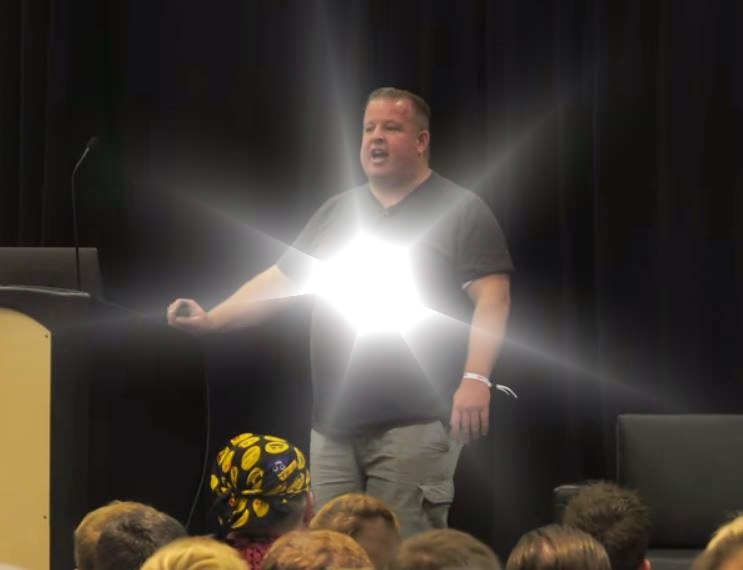Recently I came across a video that describes the six universal Principles of Persuasion. Because effective persuasion is a vital component for an ad campaign or marketing campaign please watch the video and consider the six principles of persuasion that are discussed in this video.
0:12
Researchers have been studying the factors that influence us to say yes
0:17
to the request of others for over 60 years.
0:20
And there can be no doubt that there’s a science to how we are persuaded.
0:25
And a lot of the science is surprising.
0:28
When making a decision
0:29
it’d be nice to think that people consider all the available information
0:33
in order to guide their thinking.
0:35
But the reality is very often different.
0:38
In the increasingly overloaded lives we lead, more than ever
0:43
we need shortcuts or rules of thumb to guide our decision-making.
0:47
My own research has identified just six of these shortcuts.
0:51
As universals that guide human behavior,
1:04
Understanding these shortcuts and employing them in an ethical manner,
1:09
can significantly increase the chances that someone will be persuaded by your request.
1:16
Let’s take a closer look at each in turn.
1:20
So the first universal principle of influence is Reciprocity.
1:24
Simply put, people are obliged to give back to others the form of behavior,
1:28
gift, or service that they have received first.
1:31
If a friend invites you to their party,
1:33
there’s an obligation for you to invite them to a future party you are hosting.
1:37
If a colleague does you a favor then you owe that colleague a favor.
1:41
And in the context of a social obligation
1:44
people are more likely to say yes to those that they owe.
1:49
One of the best demonstrations of the principle of reciprocation
1:52
comes from a series of studies conducted in restaurants.
1:55
So the last time you visit a restaurant,
1:57
there’s a good chance that the waiter or waitress will have given you a gift.
2:01
Probably about the same time that they bring your bill.
2:04
A liqueur perhaps or a fortune cookie or perhaps a simple mint.
2:09
So here’s the question.
2:10
Does the giving of a mint have any influence over how much tip you’re going to leave them?
2:15
Most people will say no.
2:17
But that mint can make a surprising difference.
2:20
In the study, giving diners a single mint at the end of their meal,
2:24
typically increased tips by around 3%.
2:27
Interestingly if the gift is doubled and two mints are provided, tips don’t double.
2:33
They quadruple, a 14% increase in tips.
2:38
But perhaps most interestingly of all, is the fact that if the waiter provides one mint,
2:42
starts to walk away from the table, but pauses, turns back
2:46
and says, “For you nice people, here’s an extra mint,” tips go through the roof.
2:51
A 23% increase influenced not by what was given, but how it was given.
2:58
So the key to using the principle of reciprocation is to be the first to give
3:02
and to ensure that what you give is personalized and unexpected.
3:06
The second universal principle of persuasion is Scarcity.
3:10
Simply put, people want more of those things they can have less of.
3:14
When British Airways announced in 2003
3:17
that they would no longer be operating the twice daily London-New York Concorde flight
3:22
because it had become uneconomical to run, sales the very next day took off.
3:30
Notice that nothing had changed about the Concorde itself.
3:34
It certainly didn’t fly any faster, the service didn’t suddenly get better, and the airfare didn’t drop.
3:41
It had simply become a scarce resource.
3:44
And as a result, people wanted it more.
3:47
So when it comes to effectively persuading others using the scarcity principle, the science is clear.
3:53
It’s not enough simply to tell people about the benefits they’ll gain
3:57
if they choose your products and services.
4:00
You’ll also need to point out what is unique about your proposition
4:04
and what they stand to lose
4:07
if they fail to consider your proposal.
4:10
Our third principle of influence is the principle of authority.
4:14
The idea that people follow the lead of credible knowledgeable experts.
4:19
Physiotherapists for example are able to persuade more of their patients
4:22
to comply with recommended exercise programs
4:25
if they display their medical diplomas on the walls of their consulting rooms.
4:30
People are more likely to give change for a parking meter to a complete stranger
4:34
if that requester wears a uniform rather than casual clothes.
4:39
What the science is telling us is that it is important to signal to others
4:43
what makes you a credible knowledgeable authority before you make your influence attempt.
4:50
Of course this can present problems.
4:52
You can hardly go around telling potential customers how brilliant you are.
4:56
But you can certainly arrange for someone to do it for you.
4:59
And surprisingly the science tells us that it doesn’t seem to matter if the person who introduces you
5:05
is not only connected to you but also likely to prosper from the introduction themselves.
5:11
One group of real estate agents were able to increase both the number of property appraisals
5:15
and the number of subsequent contracts that they wrote
5:19
by arranging for reception staff who answered customer enquiries
5:23
to first mention their colleagues’ credentials and expertise.
5:27
So, customers interested in letting a property were told “Lettings?
5:32
Let me connect you with Sandra who has over 15 years’ experience letting properties in this area.”
5:37
Customers who wanted more information about selling properties were told
5:40
“Speak to Peter, our head of sales. He has over 20 years’ experience selling properties.
5:45
I’ll put you through now.”
5:47
The impact of this expert introduction led to a 20% rise in the number of appointments
5:53
and a 15% increase in the number of signed contracts.
5:56
Not bad for a small change in form from persuasion science
6:00
that was both ethical and costless to implement.
6:04
The next principle is Consistency.
6:07
People like to be consistent with the things they have previously said or done.
6:12
Consistency is activated by looking for and asking for small initial commitments that can be made.
6:20
In one famous set of studies researchers found rather unsurprisingly,
6:24
that very few people would be willing to erect an unsightly wooden board
6:29
on their front lawn to support a Drive Safely campaign in their neighborhood.
6:35
However in a similar neighborhood close by,
6:38
four times as many homeowners indicated that they would be willing to erect this unsightly billboard.
6:46
Because ten days previously, they had agreed to place a small postcard
6:52
in the front window of their home that signaled their support for a Drive Safely campaign.
6:59
That small card was the initial commitment that led to a 400% increase
7:05
in a much bigger but still consistent change.
7:09
So when seeking to influence using the consistency principle,
7:14
the detective of influence looks for voluntary, active and public commitments
7:20
and ideally gets those commitments in writing.
7:23
For example, one recent study reduced missed appointments at health centers by 18%
7:31
simply by asking the patients, rather than the staff
7:35
to write down appointment details on the future appointment card.
7:40
The fifth principle is the principle of Liking.
7:43
People prefer to say yes to those that they like.
7:46
But what causes one person to like another?
7:49
Persuasion science tells us that there are three important factors.
7:54
We like people who are similar to us,
7:56
we like people who pay us compliments
7:58
and we like people who cooperate with us towards mutual goals.
8:03
As more and more of the interactions that we are having take place online
8:07
it might be worth asking whether these factors can be employed effectively
8:11
in let’s say online negotiations.
8:15
In a series of negotiation studies carried out between MBA students at two well-known business schools,
8:21
some groups were told, “Time is money. Get straight down to business.”
8:25
In this group around 55% were able to come to an agreement.
8:29
A second group however, were told,
8:32
“Before you begin negotiating, exchange some personal information with each other.
8:37
Identify a similarity you share in common
8:40
then begin negotiating.”
8:43
In this group 90% of them were able to come to successful and agreeable outcomes
8:49
that were typically worth 18% more to both parties.
8:53
So to harness this powerful principle of liking,
8:56
be sure to look for areas of similarity that you share with others
9:00
and genuine compliments you can give before you get down to business.
9:05
The final principle is Consensus.
9:08
Especially when they are uncertain,
9:10
people will look to the actions and behaviors of others to determine their own.
9:16
You may have noticed that hotels often place a small card in bathrooms
9:20
that attempt to persuade guests to reuse their towels and linen.
9:25
Most do this by drawing a guest’s attention
9:28
to the benefits that reuse can have on environmental protection.
9:32
It turns out that this is a pretty effective strategy leading to around 35% compliance.
9:39
But could there be an even more effective way?
9:42
Well it turns out that about 75% of people who check into a hotel for four nights or longer
9:48
will reuse their towels at some point during their stay.
9:52
So what would happen if we took a lesson from the principle of consensus
9:56
and simply included that information on the cards
9:59
and said that 75% of our guests reuse their towels at some time during their stay.
10:06
So please do so as well.
10:08
It turns out that when we do this, towel reuse rises by 26%.
10:15
Now imagine the next time you stay in a hotel you saw one of these signs.
10:19
You picked it up and you read the following message:
10:23
Seventy-five percent of people who have stayed in this room
10:28
have reused their towel.
10:30
What would you think?
10:32
Well here’s what you might think.
10:34
“I hope they’re not the same towels.”
10:37
And like most people you’d probably think that
10:39
this sign will have no influence on your behavior whatsoever.
10:43
But it turns out that changing just a few words on a sign
10:47
to honestly point out what comparable previous guests have done
10:51
was the single most effective message leading to a 33% increase in reuse.
11:00
So the science is telling us that rather than relying on our own ability to persuade others
11:06
we can point to what many others are already doing especially many similar others.
11:14
So there we have it.
11:15
Six scientifically validated principles of persuasion that provide for small practical,
11:21
often costless changes that can lead to big differences in your ability
11:25
to influence and persuade others in an entirely ethical way.
11:29
They are the secrets from the science of persuasion.
Image courtesy of
https://upload.wikimedia.org/wikipedia/commons/b/be/Dr_Robert_Cialdini.jpg




